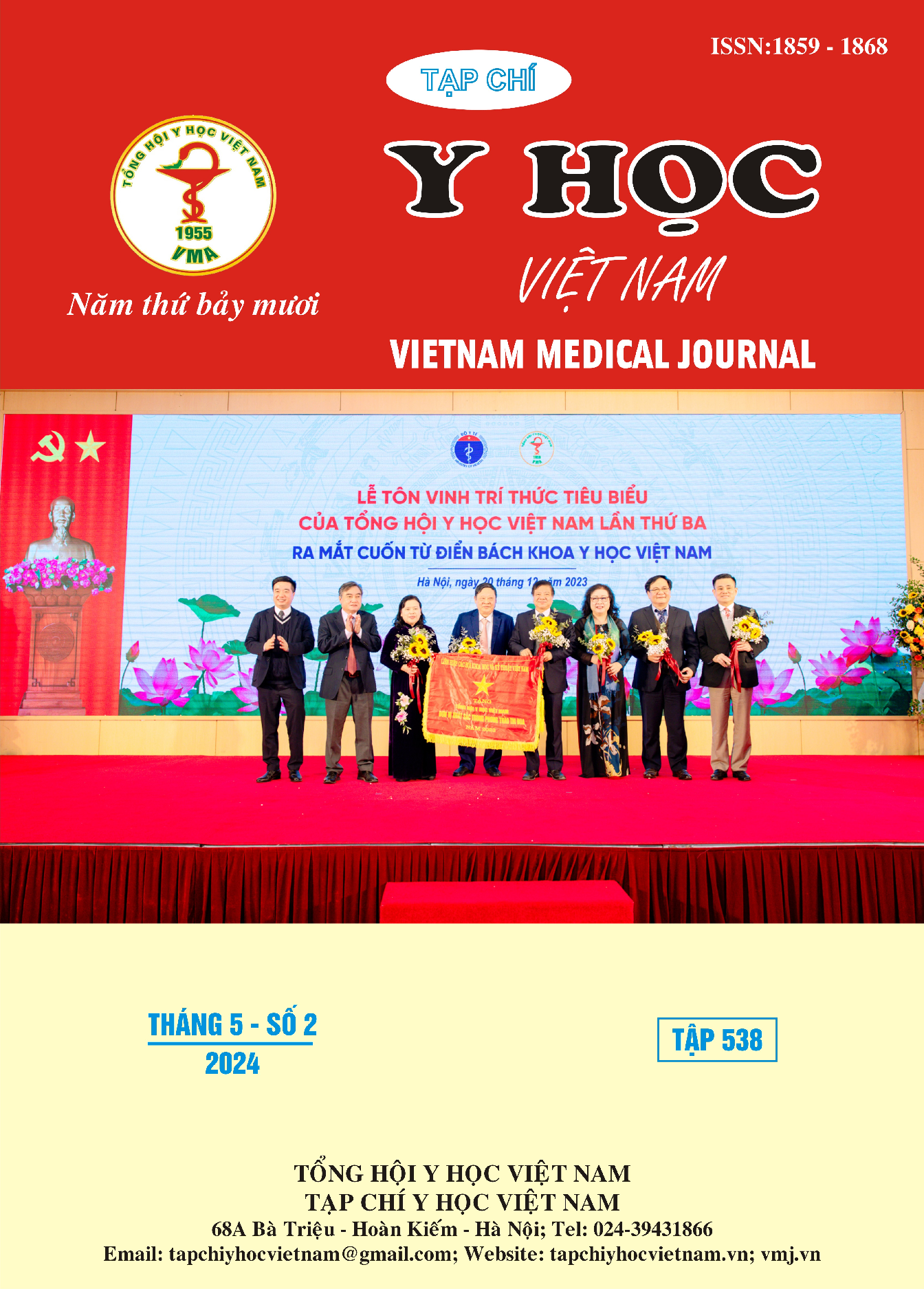SENSITIVITY AND SPECIFICITY OF THE SCREENING TOOL FOR AUTISM IN TWO-YEAR-OLDS (STAT) FOR CHILDREN AGED 24 TO 36 MONTHS AT CHILDREN HOSPITAL 1
Main Article Content
Abstract
Introduction: Autism spectrum disorder (ASD) is a neurodevelopmental disorder with impaired social interaction and communication. The Screening Tool for Autism in Two-Year-Olds (STAT) for children aged 24 to 36 months has been widely utilized worldwide. It is noted that the effectiveness assessment of the STAT in screening Vietnamese children with ASD is lacking. Objectives: Determine the sensitivity and specificity of the STAT measure used for screening ASD in children aged 24-36 months with language development delays admitted to the Department of Physical Therapy and Rehabilitation at Children Hospital 1, and identify related factors for ASD. Patients and methodology: We conducted a cross-sectional study of 86 children aged 24-36 months with language development delays. The continuous sampling technique was applied to select study participants. Children who had been previously diagnosed with autism were excluded from the study. The value of the STAT measurement scale is determined by comparing it to the DSM-5 diagnostic results. Select a cut-off value based on the Youden index. Results: Our results showed that the STAT screening scale has a sensitivity and specificity of 89.1% and 50.0%, respectively, when employing a cut-off value 2.0. The suggested cut-off point for the STAT scale to confirm a diagnosis of ASD in children is 2.5 points. Additionally, we found that the relationship between ASD risk and birth order (PR=0.74; 95% CI: 0.56-0.95; p=0.018), educational level of the fathers (PR=0.73; 95% CI: 0.56-0.96; p=0.025), and the family's economic status (PR=0.75; 95% CI: 0.58-0.99; p=0.039). Conclusion: The STAT showed high sensitivity in screening ASD among Vietnamese children aged 24-36 months with language development delays. However, children with suspected ASD must undergo a thorough diagnostic evaluation by a qualified medical professional following screening
Article Details
Keywords
Autism spectrum disorder, Screening, Children, Sensitivity; Specificity
References
2. Nguyễn Minh Phương, Trần Thiện Thắng, Phan Việt Hưng, Võ Văn Thi, Trịnh Thanh Thuý, Ninh Thị Minh Hải, et al. (2021) "Khảo sát tỷ lệ trẻ từ 18-36 tháng có biểu hiện rối loạn phổ tự kỷ bằng thang điểm M-chat tại trường mầm non ở thành phố Cà Mau 2020". Tạp chí Y học Việt Nam, 502 (1), tr. 124-128.
3. Trần Thị Thủy, Vũ Thị Chi (2020) "Tỉ lệ mắc và một số yếu tố liên quan đến rối loạn phổ tự kỷ ở trẻ em 18-60 tháng tuổi trên địa bàn tỉnh Bắc Ninh". Tạp chí Y Học Cộng Đồng, 58 (5), tr. 62-67.
4. Chiang CH, Wu CC, Hou YM, Chu CL, Liu JH, Soong WT (2013) "Development of T-STAT for Early Autism Screening". Journal of Autism and Developmental Disorders, 43 (5), pp. 1028-1037.
5. Ha V, Maxine W (2014) "Living with autism spectrum disorder in Hanoi, Vietnam". Social Science & Medicine, pp. 178-285.
6. WHO (2022) Autism, https://www.who.int/news-room/fact-sheets/detail/autism-spectrum-disorders, accessed on August 8, 2022.
7. Wu CC, Chu CL, Stewart L, Chiang CH, Hou YM, Liu JH (2020) "The Utility of the Screening Tool for Autism in 2-Year-Olds in Detecting Autism in Taiwanese Toddlers Who are Less than 24 Months of Age: A Longitudinal Study". J Autism Dev Disord, 50 (4), pp. 1172-1181.
8. Wu CC, Chiang CH, Chu CL, Iao LS, Hou YM (2021) "T-STAT for detecting autism spectrum disorder in toddlers aged 18-24 months". Autism, 25 (4), pp. 911-920.


